Discover 9 hidden attractions, cool sights, and unusual things to do in Oita (Japan). Don't miss out on these must-see attractions: City Art Museum, Ōita City Historical Museum, and Yusuhara Hachimangū. Also, be sure to include Funai Castle in your itinerary.
Below, you can find the list of the most amazing places you should visit in Oita (Oita).
Table of Contents
City Art Museum

Ōita City Art Museum opened in Ōita, Ōita Prefecture, Japan, in 1999. The collection includes Nihonga, Yōga, Bungo Nanga, crafts, modern art, and the Important Cultural Property Materials relating to Tanomura Chikuden.[1]
Address: 865 Ueno, 870-0100 Oita
Ōita City Historical Museum
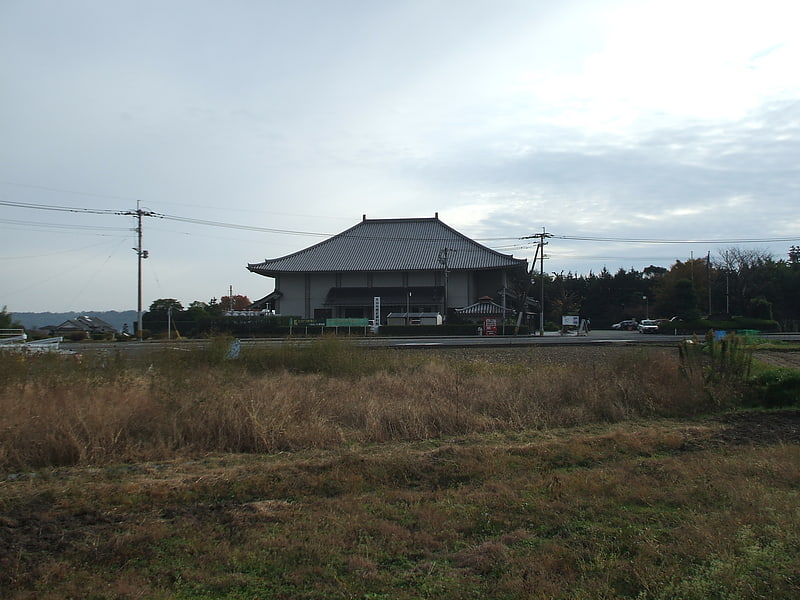
Ōita City Historical Museum opened in Ōita, Ōita Prefecture, Japan, in 1987. The collection comprises materials relating to Ōita. The museum itself is on the site of the former Bungo Kokubun-ji, the provincial temple of Bungo province.[2]
Yusuhara Hachimangū
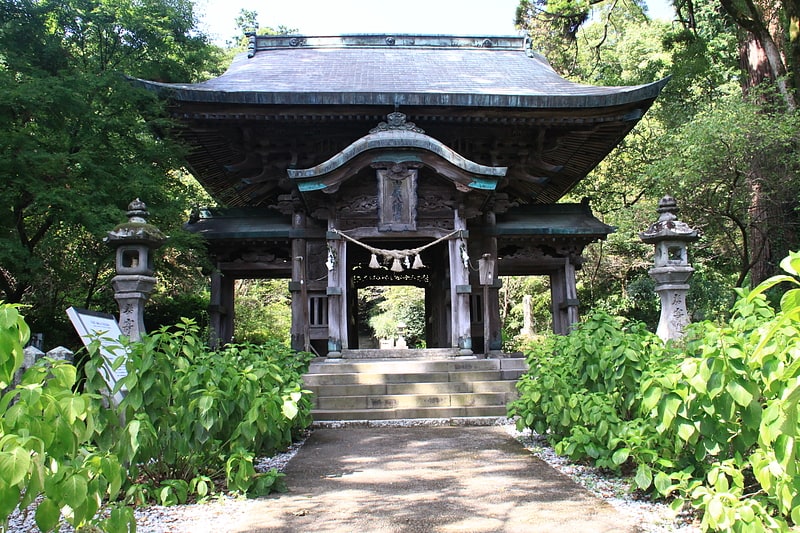
Also known as: 柞原八幡宮
Shinto shrine in Oita, Japan. Yusuhara Hachiman-gū, also known as Yasuhara Shrine, is a Japanese Shinto shrine in Oita, Oita on the island of Kyushu.[3]
Address: 987 Kamiyahata, 870-0808 Oita
Funai Castle

Also known as: 府内城
Funai Castle is a 16th-century castle, located in Ōita city, Ōita Prefecture, Japan. It was built by Ōtomo Sōrin in 1562, who owned much of the surrounding Kyūshū island. The castle was originally built with several turrets, all of which were burnt down with the three story donjon in 1743. The covered bridge that led to the castle over its moat, as well as several turrets, were rebuilt in the 20th century. Original remains include part of the wall and the moat.[4]
Address: 4 Niagemachi, 870-0046 Oita
Ōita Prefectural Art Museum

Also known as: 大分県立美術館
Museum in Oita, Japan. The Ōita Prefectural Art Museum, also known informally as OpAm, is an art museum and community exhibition venue in Ōita Prefecture, Japan.
The museum is located in the center of the prefectural capital Ōita-shi, a 15-minute walk north-west of Ōita Station.[5]
Address: 2-1 Kotobukimachi, 870-0036 Oita
Sasamuta-jinja

Also known as: 西寒多神社
Shinto shrine in Oita, Japan. Sasamuta-jinja is a Japanese Shinto shrine in Ōita, Ōita on the island of Kyushu.[6]
Address: 1644 Soda, 870-1123 Oita
Oasis Hiroba 21
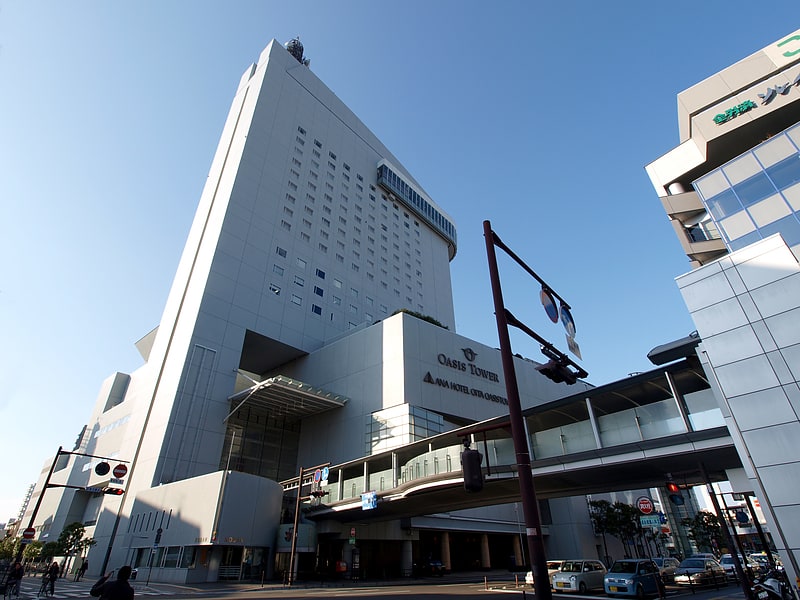
Also known as: OASISひろば21
Skyscraper in Oita, Japan. The Oasis Hiroba 21 is a skyscraper located in Ōita, Ōita Prefecture, Japan. Construction of the 102-metre, 21-storey skyscraper was finished in 1998.[7]
Oita Prefectural College of Arts and Culture
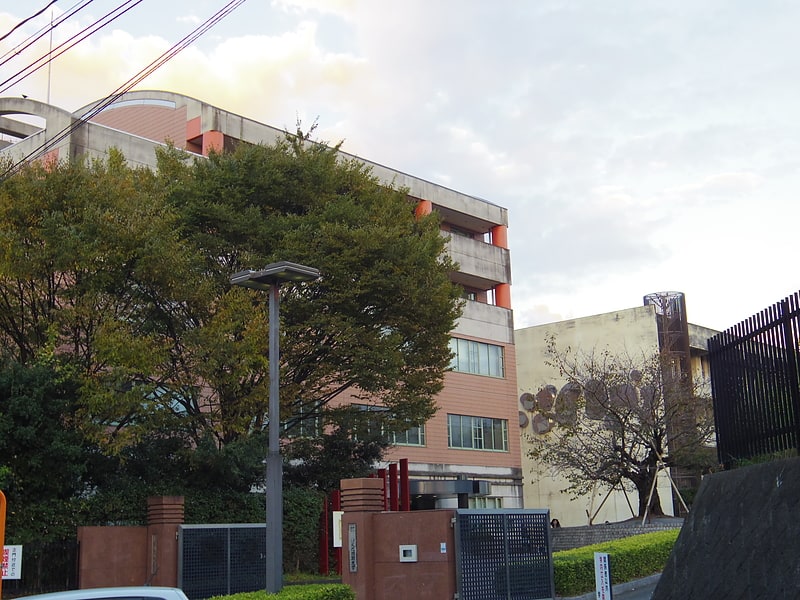
Also known as: 大分県立芸術文化短期大学
College in Oita, Japan. Oita Prefectural College of Arts and Culture is a public junior college in Ōita, Ōita Prefecture, Japan, established in 1961. The university has departments in art, music, global studies, and information and communication.[8]
Oita University
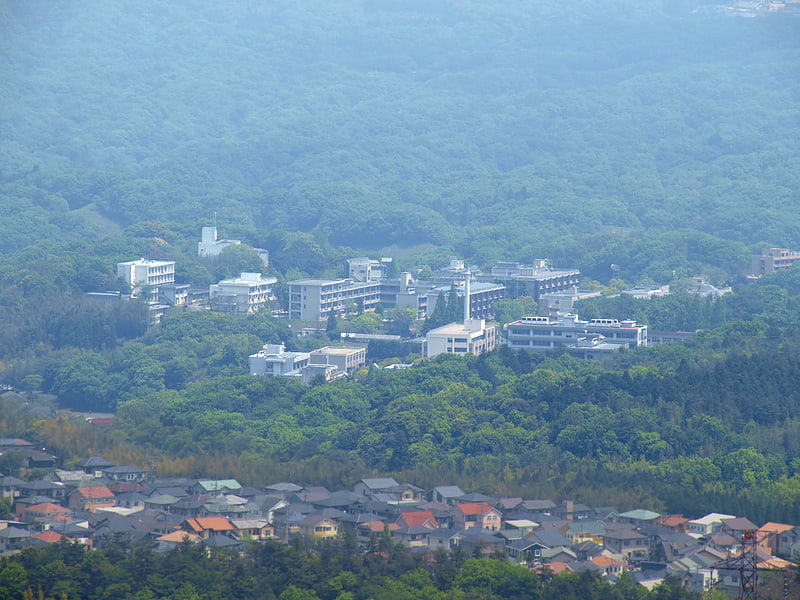
Also known as: 大分大学
National university in Oita, Japan. Oita University is a national university in Ōita, Ōita Prefecture, Japan. It was established in 1949, and in 2003 absorbed Oita Medical University, which had been established in 1976. The university offers courses in economics, education, engineering, international studies, and medicine.
The university provides an international program with two strains: IPOU an NIHO: the former for Japanese speakers below a certain skill level; the latter for those with a level of Japanese that would permit them to follow a normal Japanese curriculum. As well as the mandatory Japanese lessons, students can take courses related to Japanese history, popular culture, and subject specific courses including Economics and Linguistics.[9]